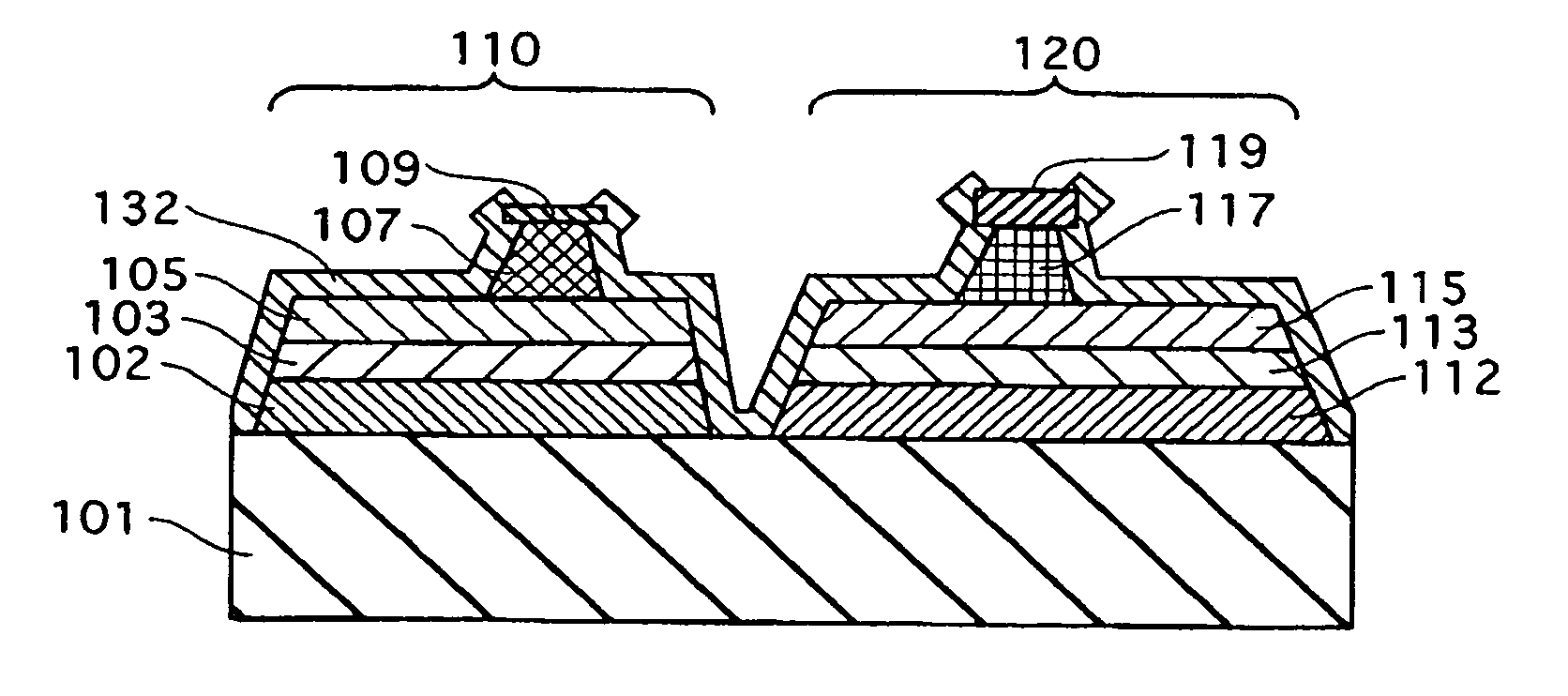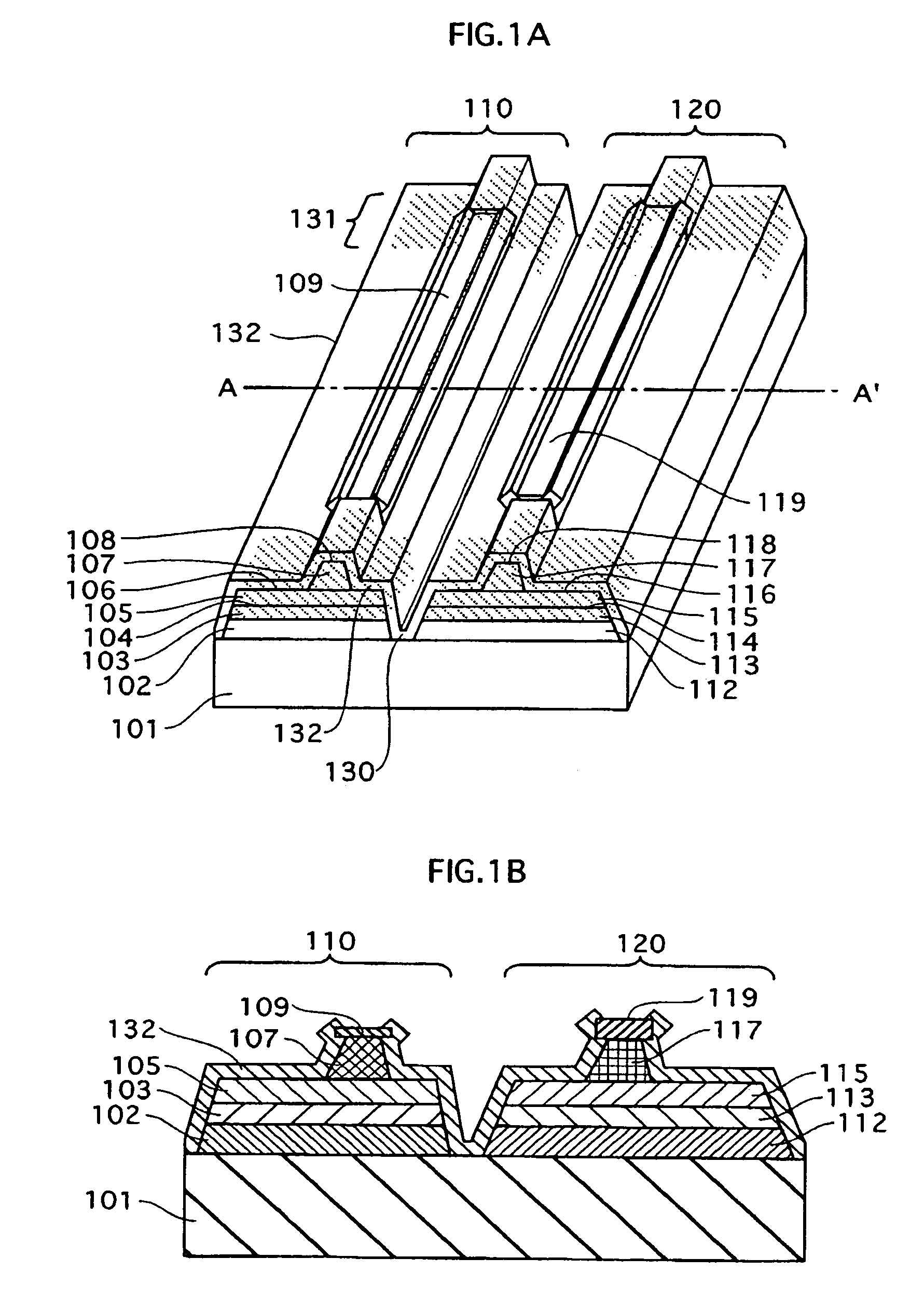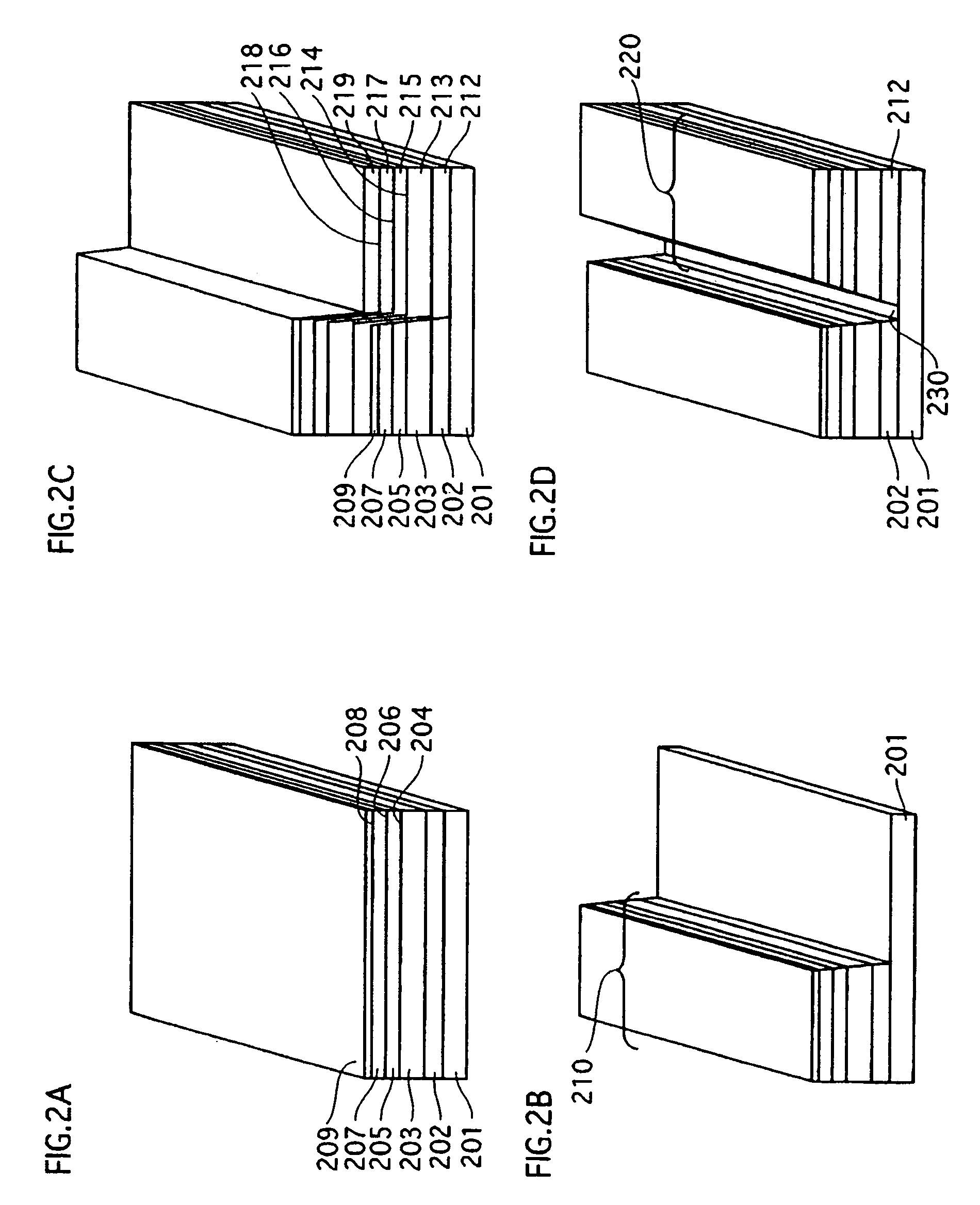Semiconductor laser device and manufacturing method thereof
a laser device and semiconductor technology, applied in the field of semiconductor laser devices, can solve the problems of increasing the resistivity of the entire infrared laser element, the difficulty of forming window structures for both laser elements at the same time, and the disadvantage of high power output, so as to reduce the number of manufacturing steps, improve the reliability of the device, and reduce the effect of manufacturing steps
- Summary
- Abstract
- Description
- Claims
- Application Information
AI Technical Summary
Benefits of technology
Problems solved by technology
Method used
Image
Examples
embodiment 1
Structure of Dual-Wavelength Semiconductor Laser Device
[0059]FIG. 1A is a schematic oblique view of a semiconductor laser device according to an embodiment 1 of the present invention. FIG. 1B is a sectional view taken along the line A-A′ of FIG. 1A.
[0060]According to the embodiment, the monolithic dual-wavelength semiconductor laser device is composed of an n-type GaAs substrate 101, and an infrared laser element 110 and a red laser element 120 assembled on the substrate 101. Each laser element has the following construction.
[0061]The infrared laser element 110 has the following layers laminated on the n-type GaAs substrate 101 in the stated order: an n-type GaAs buffer layer 102; an n-type (AlxGa1-x)yIn1-yP cladding layer 103; a GaAs / AlGaAs-based active layer 104; a p-type (AlxGa1-x)yIn1-yP first cladding layer 105; a p-type GaInP etching stop layer 106; a p-type (AlxGa1-x)yIn1-yP second cladding layer 107 having a ridge shape; a p-type GaInP intermediate layer 108; and a p-type Ga...
embodiment 2
[0116]FIG. 6A is an oblique view of a semiconductor laser device according to an embodiment 2 of the present invention. FIGS. 6B and 6C are sectional views of the semiconductor laser device.
[0117]The semiconductor laser device of the embodiment 2 is basically similar in construction to the semiconductor laser device of the embodiment 1. The difference lies in that the current blocking layer is made of AlInP. In addition the manufacturing method differs from that of the embodiment 1. The following describes the second manufacturing method with reference to FIGS. 5 and 6.
[0118]Through the same steps illustrated in FIGS. 2A-3B of the embodiment 1, the ridges constituting part of the waveguides are formed.
[0119]Next, as illustrated in FIG. 5A, the SiO2 film (not illustrated) and contact layers 309 and 319 are etched using photolithography to remove regions thereof existing above window structures 331.
[0120]Next, as illustrated in FIG. 5B, AlInP is selectively grown to form a current blo...
PUM
 Login to View More
Login to View More Abstract
Description
Claims
Application Information
 Login to View More
Login to View More - R&D
- Intellectual Property
- Life Sciences
- Materials
- Tech Scout
- Unparalleled Data Quality
- Higher Quality Content
- 60% Fewer Hallucinations
Browse by: Latest US Patents, China's latest patents, Technical Efficacy Thesaurus, Application Domain, Technology Topic, Popular Technical Reports.
© 2025 PatSnap. All rights reserved.Legal|Privacy policy|Modern Slavery Act Transparency Statement|Sitemap|About US| Contact US: help@patsnap.com



